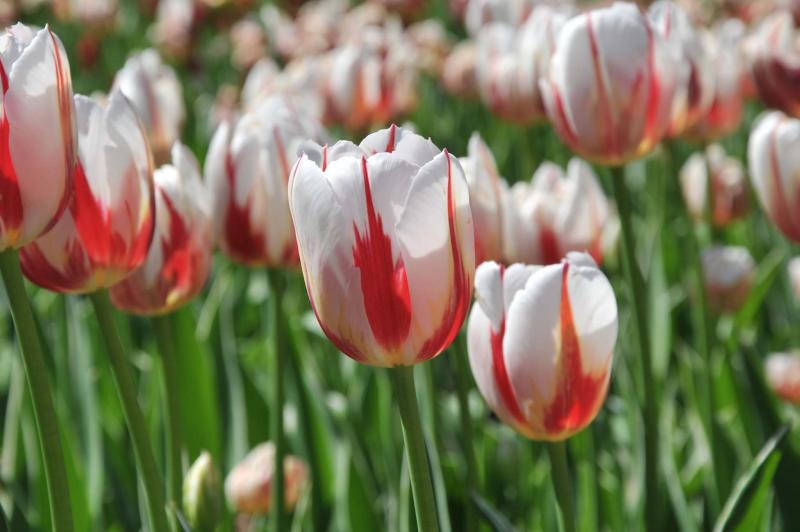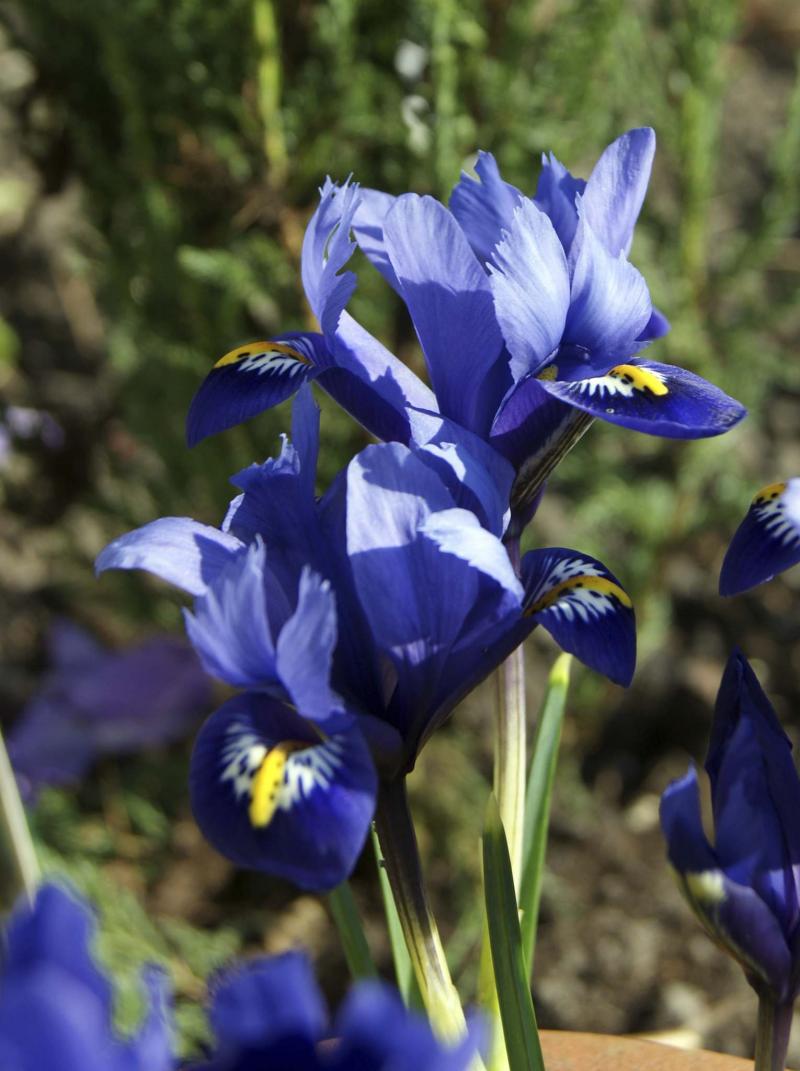
Vanhof & Blokker Simple Pleasures
Only 15 cm tall, Iris reticulata is ideal for accessorizing your tulip bulbs.
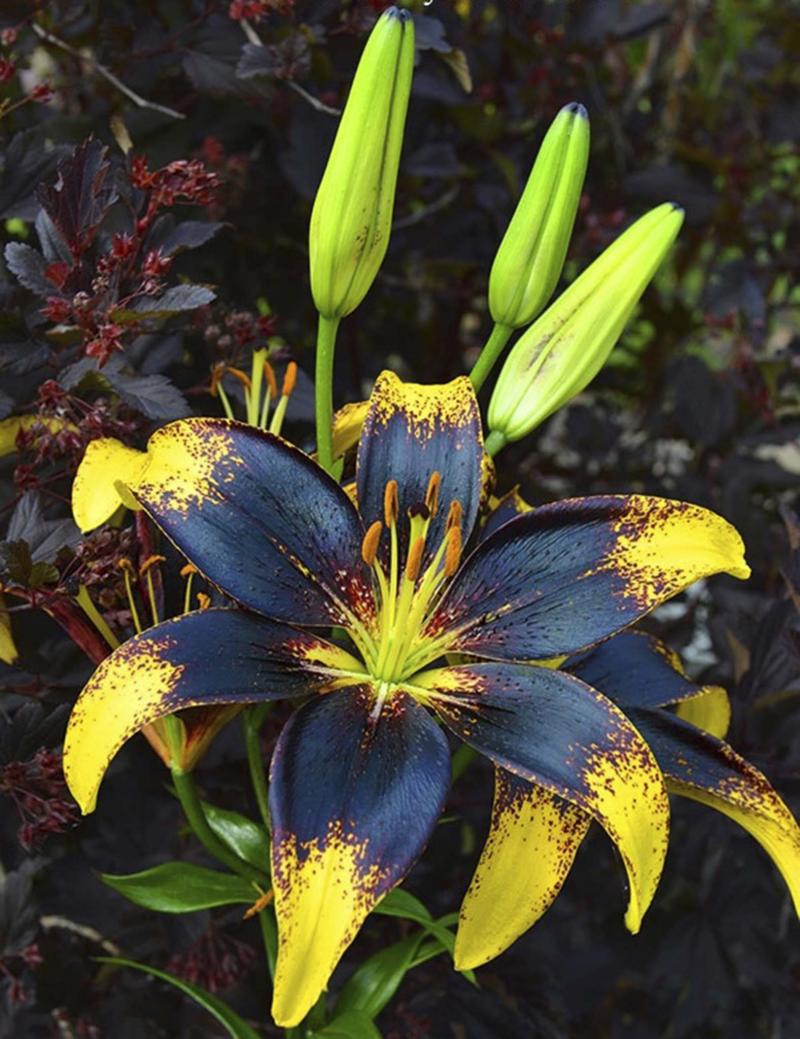
The Lily Nook
Fall is the perfect time for planting lily bulbs such as Lionheart, a glowing Asiatic lily.
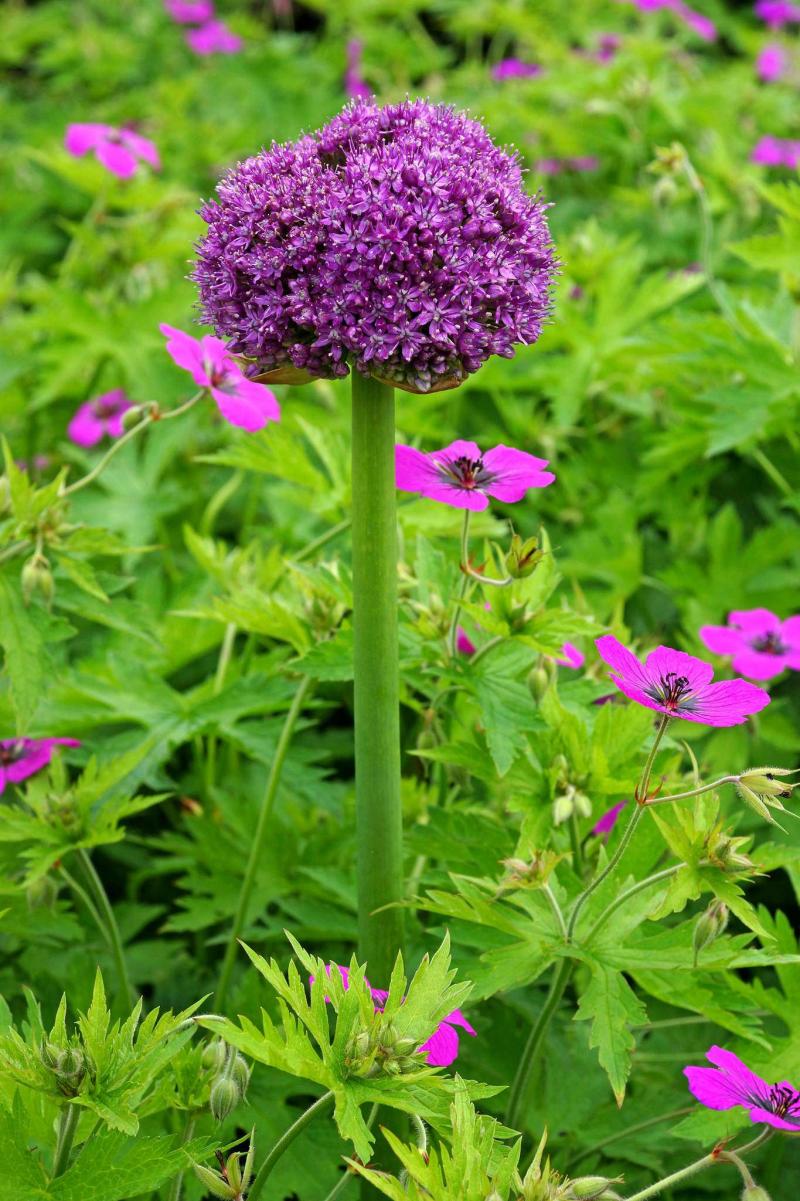
Vanhof & Blokker Simple Pleasures
Tall and elegant, Allium Giganteum grows to 100 cm.
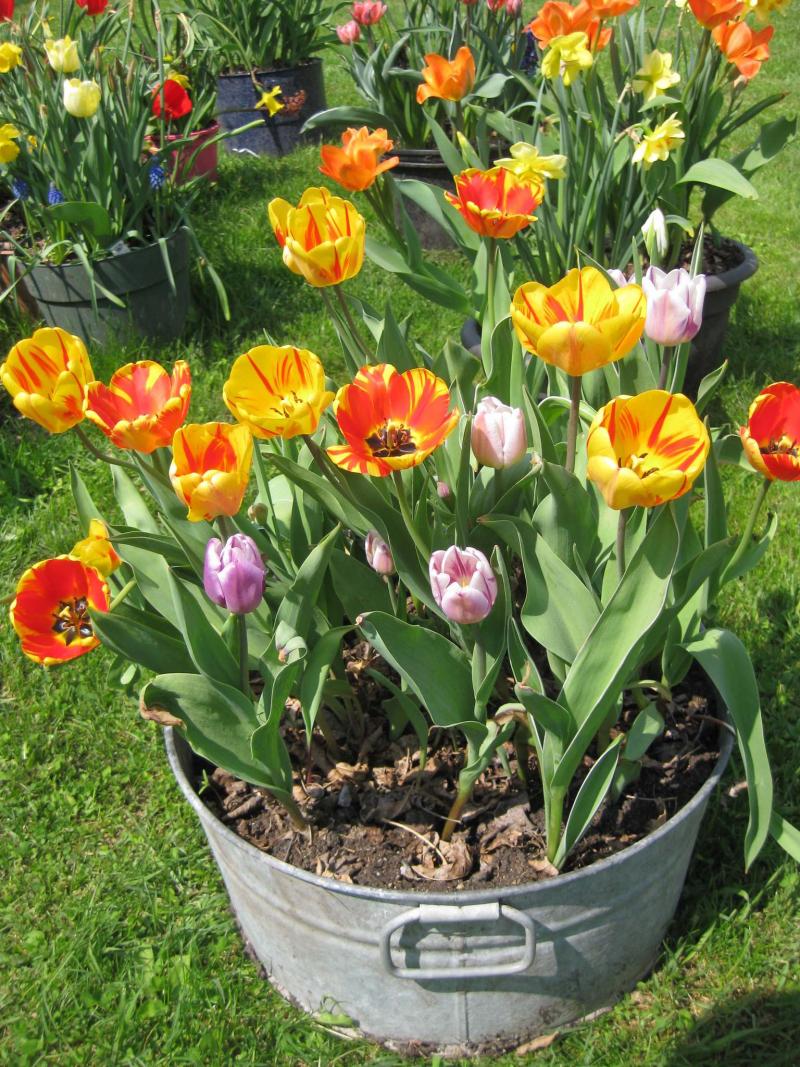
Dennis Rawluk
A unique trenched garden in Moosehorn makes potted tulip bulbs a shining success.
With the introduction of many new tulip varieties in time for Canada’s sesquicentennial (not exactly a word that rolls easily off your tongue), patriotic and celebratory tulip varieties will stand up and be counted next spring in private and public gardens from coast to coast.
Garden clubs across the country have taken advantage of an offer from companies such as Vanhof and Blokker, one of Canada’s oldest horticultural companies since 1868, to purchase bulk quantities of Tulipa Canadian Blend for their members and fall bulb sales. Local garden centres such as Jensen’s Nursery will carry Florissa’s Canadian Celebration tulip, a mid-spring blooming tulip whose official name is Happy Generation. Canadian Eh! is another exuberant, celebratory variety.
The official commemorative tulip is the Canada 150. It will be showcased in the flower beds of the National Capital Commission (NCC) in Ottawa and thousands more will bloom in community gardens across Canada. The Canada 150 tulip is available exclusively at Home Hardware, which has partnered with the NCC, the Kingdom of Netherlands and Communities in Bloom.
Available in limited quantities, each of these white and red tulip varieties with their unique markings have been developed in the Netherlands, after many years of breeding.
Jean Dorge, the province’s grounds manager, hopes to receive his shipment of 6,000 Tulipa Canadian Blend in the next week or so for a stunning display along Memorial Boulevard next spring. At Assiniboine Park, says Wade Meisner, horticulture design supervisor, they are preparing to plant 20,000 Tulipa Canadian Blend in the Leo Mol Sculpture Garden. A mix of tulip bulbs — more than 4,500 — will be planted in the English Garden along with 2,800 narcissus (daffodil) and 1,600 crocus bulbs.
The choice is almost endless when it comes to selecting hardy tulips. Fringed, feathered, double or singled petalled, two-toned, peony or lily-like, the world of tulips is a storied and fascinating one. New for this year, Jensen’s Nursery is carrying Gorilla, a deep purple, fringed tulip that blooms in late spring and grows to a height of 45 centimetres.
Now is a great time to start planning for a celebration of colour in your garden by planting bulbs this fall. Consider the following planting tip from Dennis Rawluk, a Free Press reader who gardens in Moosehorn, located in Manitoba’s Interlake Region.
Last fall, Rawluk potted up tulip, muscari, daffodil and hyacinth bulbs in 27 containers which he then placed in a long trench in his vegetable garden, about 5 centimetres below the soil surface. He filled the trench with soil, firming it carefully around and on top of each container so as to eliminate any air pockets, and then covered the entire area with a 20 cm insulating layer of leaves. He lifted the containers in spring and placed them throughout his garden, covering the flowering displays with blankets when frost threatened.
Thrilled by his success with this trenching method, Rawluk is planning to display sweeping drifts of Canada 150 tulips next spring. In preparation, Rawluk is digging a new flowerbed this fall that is 15 metres long and 2.5 metres wide.
Tulip bulbs will be planted in 11 gallon plastic nursery pots which he is then inserting into a second plastic pot. He may also underplant once again with Iris reticulata, a dwarf variety with deep blue blooms that have splashes of vivid yellow and white and grows to only 15 centimetres. By doubling the pots, Rawluk plans dual usage. In springtime once the bulbs have finished flowering, he will lift out the liners that contain the bulbs, move them to a sheltered location behind his shed, and then plant annuals in the empty pots that remain in the trench. Rawluk monitors the moisture levels of the potted bulbs regularly throughout the warm summer months, adding just enough water to ensure they don’t dry out.
If, at this point, you are throwing up your hands and surrendering to the potential threat of damage from squirrels, rabbits, and deer -- don’t. With a little effort, there are solutions for growing bulbs so they don’t end up damaged or eaten. Hardware cloth, chicken wire or galvanized poultry netting can be used to line the bottom and sides of your planting area. After planting, add a double thickness of chicken wire or poultry netting to the soil surface and cover with a layer of shredded leaves.
Of course, one never entirely outwits hungry pests. In spring, once the bulbs begin blooming, rodents or deer may be awaiting the feast. Organic, odor-based deer and animal repellents are quite effective or plant narcissus bulbs which contain poisonous alkaloids and are avoided by deer and rodents. Blazing Starlet, for example, is a novelty split-corona narcissus with ruffled pale yellow cups that have a deep orange edge. The earliest blooming narcissus variety is Rynfeld Early Sensation which grows to 35 centimetres.
Galanthus (snowdrops), one of the earliest blooming bulbs, as well as allium and Fritillaria meleagris are all good choices for areas with populations of squirrel and deer as they generally leave these alone. Fritillaria meleagris has unusual, pendulous purple blooms that have a checkerboard pattern although the scarlet lily leaf beetle, if present in your garden, will feed on the leaves, stems, buds, and flowers of fritillaries. Monitor pest populations by picking and squishing. Spraying eggs and adult beetles with Safer Brand Insecticidal Soap and Pyrethrin Concentrate can be effective and is said to be relatively safe to beneficial insects.
Giganteum, one of the tallest ornamental allium varieties, grows to 100 centimetres on a tall, sturdy, leafless stalk. Similar in shape to a lollypop, its ball-shaped bloom is covered in hundreds of small purple florets. Hardy to zone 4, Giganteum blooms in late spring to early summer and prefers a full sun location. It’s easy to be captivated by some of the more exotic but less hardy varieties of allium. Ensure that you choose one that is hardy to our growing zone. Zone 4 varieties should be mulched and may benefit from a protected location.
Fall is also a great time to plant lily bulbs. One of the most exciting lilies to grace Manitoba gardens is Lionheart, an Asiatic lily with bright yellow tips. What really sets Lionheart apart is the dark, almost black centre and splattering of maroon speckles for a masterful use of colour.
With so many bulb choices, where should you start? Choose only healthy, firm bulbs. Wait until temperatures are consistently below 15 degrees Celsius. Select a site that is well-draining and avoid low-lying areas which can be catch-basins for rain or frost. Plant for successive colour and follow the directions on labelling to ensure proper planting depth and bulb orientation as these vary depending on the type of bulb you are planting. Once planted, water the bulbs well, mulch with shredded leaves or bark chips, and keep moist until the ground freezes.
Adequate snow cover goes a long way towards ensuring survival of both hardy and marginally hardy bulb varieties. It’s always a good idea to label buried containers and mark the area where bulbs are planted.
colleenizacharias@gmail.com
Notice:
The Manitoba Regional Lily Society will host its annual fall bulb sale in Winnipeg on Sept. 24 at the Assiniboine Park Conservatory and in Brandon on October 1 at Central Community Club, 529 4th St. Visit www.manitobalilies.ca for more details.

